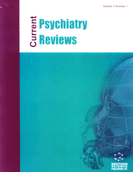Abstract
Non-invasive transcranial stimulation has gained increasing interest as a complementary treatment of neuropsychiatric diseases. The rationale behind it is that diseases of the central nervous system are often accompanied by pathological cortical activity changes that can be reverted by external cortical modulation. Electrical stimulation with weak direct currents is a technique to modulate cortical activity. Originally developed in the 1960s in animal experiments, it increases or decreases cortical excitability by modulating neuronal resting membrane potential. Phenomenological human pilot studies showed mixed results. Technical advances have recently provided new tools to evaluate the effects of this technique to modify cortical excitability in humans. Newly developed protocols of transcranial direct current stimulation (tDCS) now permit polarity-dependent cortical excitability modulations which are induced non-invasively and remain for over an hour after tDCS. In doing so, tDCS modulates perceptual as well as cognitive functions in healthy subjects, making it a potentially attractive tool for cognitive neuroscience research. Moreover, clinical pilot studies show that tDCS induces beneficial clinical effects in depression, tinnitus, chronic pain, epilepsy, stroke and Parkinsons disease. tDCS could therefore evolve as a promising complementary tool to treat neuropsychiatric diseases in future.
Keywords: Human, brain, neuroplasticity, tDCS, TMS, depression
 7
7



